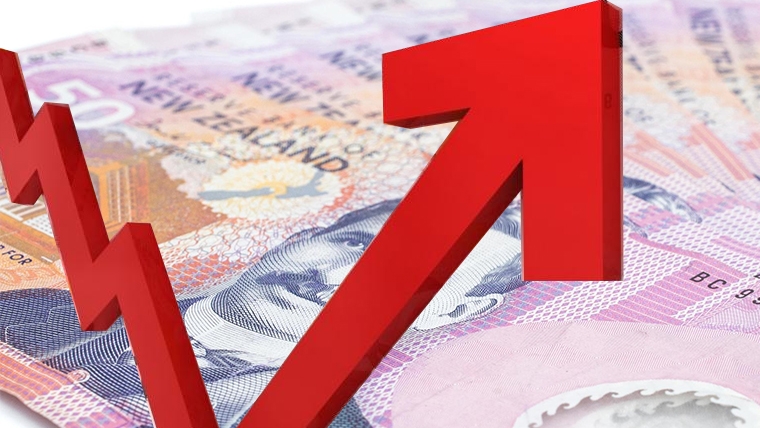
Weaker euro area PMI data drove down rates in the region and dragged down the euro. UK PMI data weren’t as soft, while the US services PMI remained robust and inflation indicators were stronger. A move higher in US Treasury yields proved temporary and rates are now slightly lower across the curve. Commodity currencies have outperformed, with the NZD up to 0.6280 and NZD/EUR up 1% towards 0.5650. Equity markets show modest gains.
PMI data for euro area for September were weaker across the board and below consensus estimates. The composite PMI fell 2.1pts to 48.9, the first sub-50 reading in seven months, not helped by Germany’s manufacturing sector slumping further into contractionary territory and France’s services sector contracting following the Olympics-related surge in activity. The weaker data saw the market pricing in more easing from the ECB this year, driving rates down across the survey and a fall in EUR. Some 44bps of easing is now priced over the remaining two ECB meetings of the year (up from 38bps at the end of last week), Germany bund yields fell 5-8bps, led by the short-end, and EUR fell towards 1.1080, before recovering to 1.1120, down 0.4% for the day and the weakest of the FX majors.
The UK PMI data showed a more moderate fall compared to the euro area, with the composite index down less than a point at 52.9, but was consistent with recent GDP data showing slower growth momentum, after the recovery in the first half of the year. UK short rates fell only slightly and the UK 10-year rate is up 2bps against the falls seen elsewhere. This supported GBP, and after falling to a low of 1.3250, it has recovered a full cent to 1.3350, up 0.2% from last week’s close.
US PMIs showed a further fall in manufacturing to 47.0, while the services sector remained relatively steady at 55.4, continuing to suggest a robust economic backdrop, although this index continues to run much stronger than the preferred ISM indicator which covers a much larger sample. The inflation components of the survey rose, with input prices for service providers at their highest level in a year, with firms noting the need to raise worker pay. US Treasury yields rose after the survey, but the move wasn’t sustained. The 10-year rate peaked at 3.79% before falling to 3.73% and it is currently 3.74%, little changed from last week’s close.
Following the Fed’s jumbo 50bps rate cut last week, FOMC members have begun the speaking circuit and comments look to be from the same songsheet. Fed Presidents Goolsbee, Kashkari and Bostic said they supported the 50bps cut. Goolsbee appeared to be the most dovish, commenting that borrowing costs are “hundreds” of basis points above neutral and “that likely means many more rate cuts over the next year”. He argued “if we want a soft landing, we can’t be behind the curve”.
Kashkari was in favour of smaller 25bps steps going forward “unless the data changes materially” and his projections for rate cuts was in line with the median forecast throughout. Bostic said that the Fed should not commit to a cadence of outsize moves, given uncertainty over the level of the neutral rate and out of concern that inflation could return, although he also noted that interest rates are “a fair distance above” neutral.
The USD DXY index shows a 0.1% gain for the day, but that reflects the weaker EUR, as noted, while other major currencies are stronger against the USD. Commodity currencies have outperformed, with the NZD, AUD and CAD at the top of the leaderboard, all up 0.5-0.6% from last week’s close. The NZD is trading close to its session high, around 0.6280, while the AUD is up near 0.6850. NZD/EUR is up 1% to almost 0.5650, NZD/GBP is back at 0.47 and NZD/JPY is up modestly to around 90.
Oil prices were higher on rising tension in the Middle East, with Israel striking Hezbollah targets in Lebanon, marking the deadliest day of the conflict. Brent crude rose above USD75 per barrel before falling after Iran’s President said that his country is prepared to de-escalate tensions as long as it sees the same level of commitment on the other side. Brent crude is now down nearly 1% on the day to below USD74.
Yesterday, the PBoC lowered its 14-day reverse repurchase rate 10bps to 1.85% the drop reflecting a catch-up from the 10bps drop in the 7-day rate in July. Of note though Governor Pan will hold a press conference today on financial support for economic development. Policy easing from China is becoming almost a weekly affair, but the drip-fed measures and lower rates to date have had little impact on stimulating growth. The market wants to see bigger bang measures to restore confidence in China’s economic outlook.
In the domestic rates market, global forces drove higher NZ rates, with NZGB rates up 1-5bps with a steepening bias. The 10-year rate rose 4bps to 4.21%. The swaps curve also steepened, albeit to a lesser extent, with the 2-year rate flat at 3.65% and the 10-year rate up 2bps to 3.87%.
In the day ahead, the RBA policy update should pass uneventfully, with policy on hold and the central bank not inclined to cut or lift the cash rate anytime soon. Tonight sees the release of Germany’s IFO survey of businesses and the US Conference Board measure of consumer confidence.

We welcome your comments below. If you are not already registered, please register to comment
Remember we welcome robust, respectful and insightful debate. We don't welcome abusive or defamatory comments and will de-register those repeatedly making such comments. Our current comment policy is here.